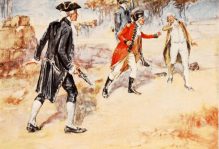The Calcutta Double Decker
Editor’s Note: Prof Aloke Kumar is someone whom I hold in awe. I have been enjoying his excellent writings on Facebook posts. And each of his posts left an indelible mark on me. There were times I wondered if God could have given me half his writing skills. His accomplishments are too many for me to relate here, the biog sketch gives a glimpse of his multifacted personality. It was with some temerity that I approached him to give us permission to publish some of his writings in Probashionline. A generous person that Prof Aloke Kumar is, he readily agreed. What impressed me even more than his extraordinary writings skills is his humbleness and ability to wear his stupendous achievements very lightly. Thank you Prof Aloke Kumar- a great writer and an even greater human being.
It’s raining cats and dogs. Sitting crouched on the first row seat on top of a double decker bus as the rain lashes out at you from the front wide open window. The L20 route bus dancing through the tarred road, as the driver turns the wheels lock to lock. Left, right, left. Carrying its weight low for a low centre of gravity, along with stabiliser bars at both ends of the chassis means that the bus effortlessly slams through. Now you know why it’s not often that you see a double-decker on its side.
These Double Deckers had the appearance of a seasoned war veteran, what with all the dings and dents all over. Running 175km every day for 15 years in chaotic traffic does take its toll, right? Even the top was not spared, no doubt by trees that grow unhindered by the roadsides. Trust us, we will never look at these monsters the same way again.
This double deckers were propelled by a 6474cc in-line six-cylinder engine that makes 125bhp and 41.4kgm. And it puts this power to the road via a four-speed transmission. A power plant larger than the Bentley Continental producing as much power as a Honda Civic. Definitely does not sound like much, but in this case, the numbers don’t tell even half the story.
This is child’s play for a bus that has been braving the worst that Calcutta has thrown at it since it was first introduced in 1926. Since then, Calcutta has become Kolkata and CSTC has made way for the single decker Volvo under the Jawaharlal Nehru Urban Renewable Mission logged on every bus with the initial of our first Prime Minister and painted in bright colour as JNURM.
Calcutta was one of the few cities in the world where double-decker buses plied on the roads. In India, besides Calcutta, Bombay, Thiruvananthapuram, Chennai, Hyderabad and Bangalore also had them. Some of them still have including Mumbai.
The chassis is made by Ashok Leyland as is the Hino series engine, both of which are designed specifically for the double-decker bus. The body or the coachwork is done by the Punjabi Garages that donned the Hazra Road, now gone.
The British had introduced doubledecker buses in Kolkata, then Calcutta in 1926. The first doubledecker bus plied between Shyambazar and Kalighat. Worldwide, these buses carry much higher number of passengers than conventional buses. In thickly populated cities like Kolkata, a double-decker is a boon.
The Left Front government gradually phased them out in the mid-90s because they were thought to be unsuitable for city traffic. There is tremendous nostalgia associated with double-decker buses and it’s unfortunate they were withdrawn.
A double-decker bus is a bus that has two storeys or decks. Double-decker buses are used for mass transit in the United Kingdom, an iconic example being the red London bus. Double-decker buses are also used in other cities in Europe, Asia, and former British colonies and protectorates such as India, Hong Kong, Singapore, Malaysia and Canada.
Early double-deckers put the driver in a separate station. Passenger access was via an open platform at the rear, and a conductor would collect fares. Modern double-deckers have a main entrance door at the front, and the driver takes fares, thus halving the number of bus workers aboard, but slowing the boarding process. The rear open platform, popular with passengers, was abandoned for “health and safety” reasons.
The introduction date of the very first commercial double decker bus,just like the first bus itself, seems to be open to some debate, as different versions of models and claims appear all over. However , as early as 1662 the first attempt was made to ply double decker drawn by horses. Generally what is agreed upon is that commercial buses were first widely introduced in the 1820′s, and as this is some time before the introduction of the combustion engine, they were also horse drawn as you would expect.
These early buses were called ‘Omnibuses‘ and ran in France and England, and it wasn’t until 1847 when Adams & Co of Fairfield works, manufactured a vehicle with a clerestory roof with built in upper seats running the length of the bus. These were first in London, and to encourage people to use these the fare was half of the cost of sitting inside.
These open top double decker horse drawn buses were not initially popular, and it took nearly 10 yrs for the idea to catch on, when in 1852 John Greenwood introduced a much larger double decker with enough space for up to 42 passengers and needed pulling by 3 horses, with the top deck still accessed by a ladder.
These buses became more novel with innovations such as a staircase to make access to the top deck easier, along with forward facing garden seats rather than longitudinal bench seats, and this encouraged more ladies to ride them. Horse drawn buses faced stiff competition from cheaper trams and trains that became common in the later 1800′s, and with the introduction of the combustion engine and the 1st World War, the last ever horse drawn bus in London ceased operating on 4th August 1914, but continued in more rural areas in the UK until 1932.
We have all realised that the Double Decker Bus has long gone from Calcutta. My friend, Alapan Bandopadhayya, the Principal Secretary transport, tells me that the State Government has planned a comeback of the Double Deckers, though only for tourism, to give shape to the Chief Minister’s London dreams.
Let it be, though the double-deckers are primarily for commuter transport but open-top models are used as sight-seeing buses for tourists. William Gladstone, speaking of London’s double-deck horse drawn omnibuses, once observed, “…the best way to see London is from the top of a bus”. We will echo : ‘that the best way to see Kolkata is from the top of a double decker bus’.





